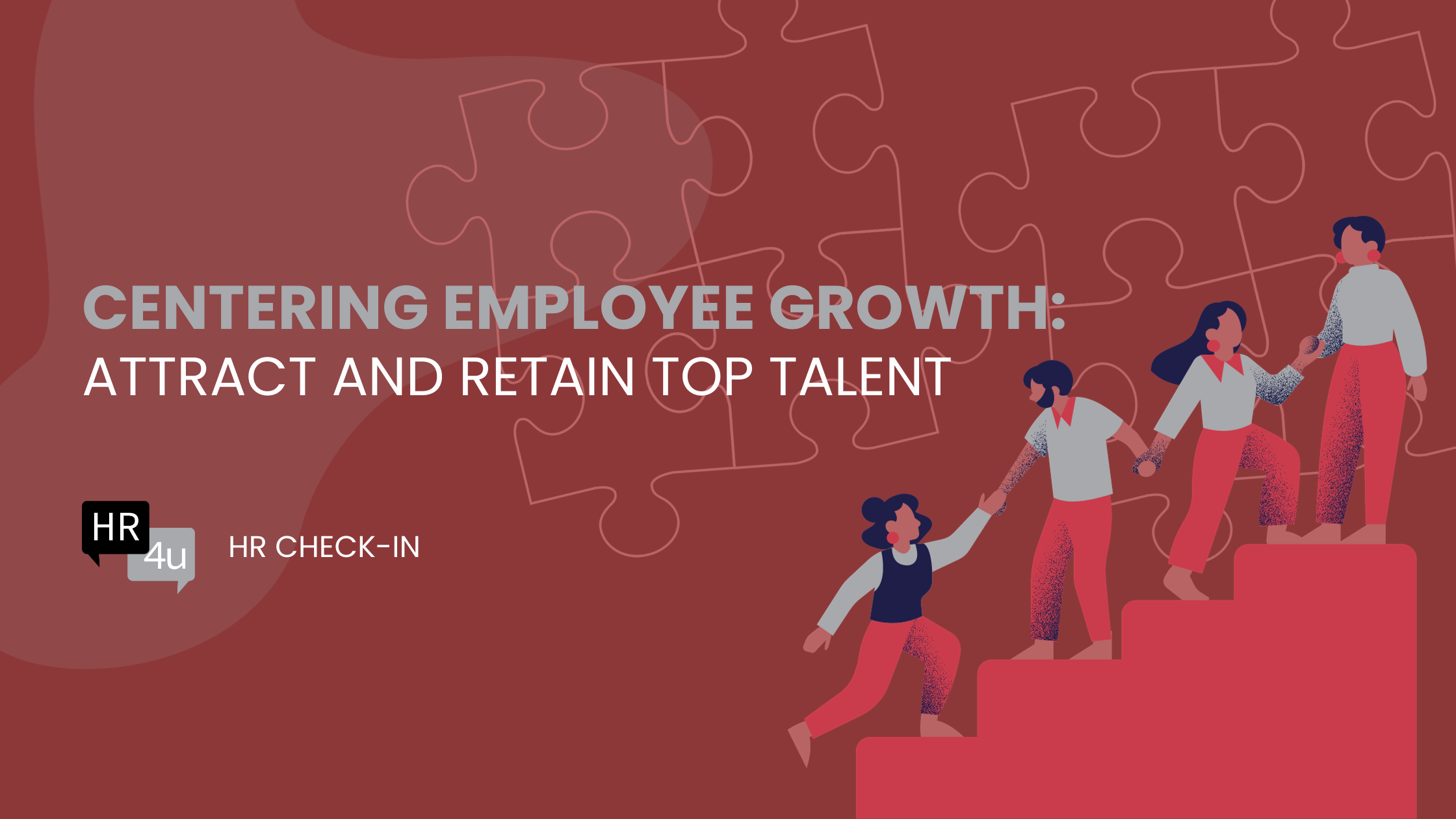Attract and Retain Top Talent
It’s nothing new, skilled professionals are in high demand; attracting and retaining top talent has become a strategic imperative for organizations. HR plays a pivotal role in this endeavor, and one of the key strategies is centering employee growth. In today’s edition of HR Check In, we’ll explore why prioritizing employee development is essential, how it benefits both employees and employers, and practical steps for implementing a growth-centric approach.
The Talent Dilemma
Attracting and retaining top talent is a formidable challenge for businesses across industries. As we began to explore in last week’s Check In, skilled professionals are not only seeking competitive salaries but are increasingly prioritizing personal and professional growth opportunities when choosing their employers. A study by LinkedIn found that 94% of employees would stay at a company longer if it invested in their career development. So, what is your organization doing to improve conditions and excel workers into thriving positions?
The Power of Employee Growth
1. Increased Job Satisfaction and Engagement:
When employees see a clear path for growth within an organization, they are more likely to be satisfied and engaged in their roles. Investing in training and development programs communicates a commitment to the success and well-being of employees.
2. Enhanced Employee Retention:
Organizations that prioritize employee growth are better positioned to retain their top performers. The sense of purpose and achievement derived from ongoing learning and development opportunities can create a sense of loyalty, reducing turnover rates.
3. Attraction of Top Talent:
A strong emphasis on employee growth sends a powerful message to prospective candidates. Organizations that provide avenues for skill development and career advancement become magnets for top talent, giving them a competitive edge in the talent market.
HR’s Role in Fostering Employee Growth
1. Needs Assessment and Customized Development Plans:
HR should work closely with employees to identify their career aspirations and skill gaps. Tailoring development plans to individual needs ensures that the growth initiatives align with both organizational goals and personal ambitions.
2. Implementing Learning and Development Programs:
Establishing comprehensive learning and development programs is crucial. These may include workshops, mentorship programs, online courses, and on-the-job training. Providing diverse opportunities for growth accommodates different learning styles and preferences.
3. Regular Feedback and Performance Reviews:
Continuous feedback and performance reviews are essential for tracking employee progress. Constructive feedback helps employees understand their strengths and areas for improvement, facilitating a targeted approach to their professional development.
4. Promoting a Growth Mindset Culture:
HR can foster a growth mindset culture within the organization by celebrating learning achievements, recognizing efforts, and emphasizing that mistakes are opportunities for learning. This cultural shift encourages employees to embrace challenges and continuously seek improvement.
Realizing the Benefits
Prioritizing employee growth isn’t just a one-time investment—it’s an ongoing commitment. As employees grow, so does the organization. The benefits are manifold, including a more skilled and engaged workforce, improved employee satisfaction, and a reputation as an employer of choice.
It is by centering employee growth that organizations can build a workforce that not only meets current demands but is also equipped to navigate the challenges of the future. In this era of talent scarcity, investing in the development and well-being of employees is not just a competitive advantage—it’s a strategic necessity.
